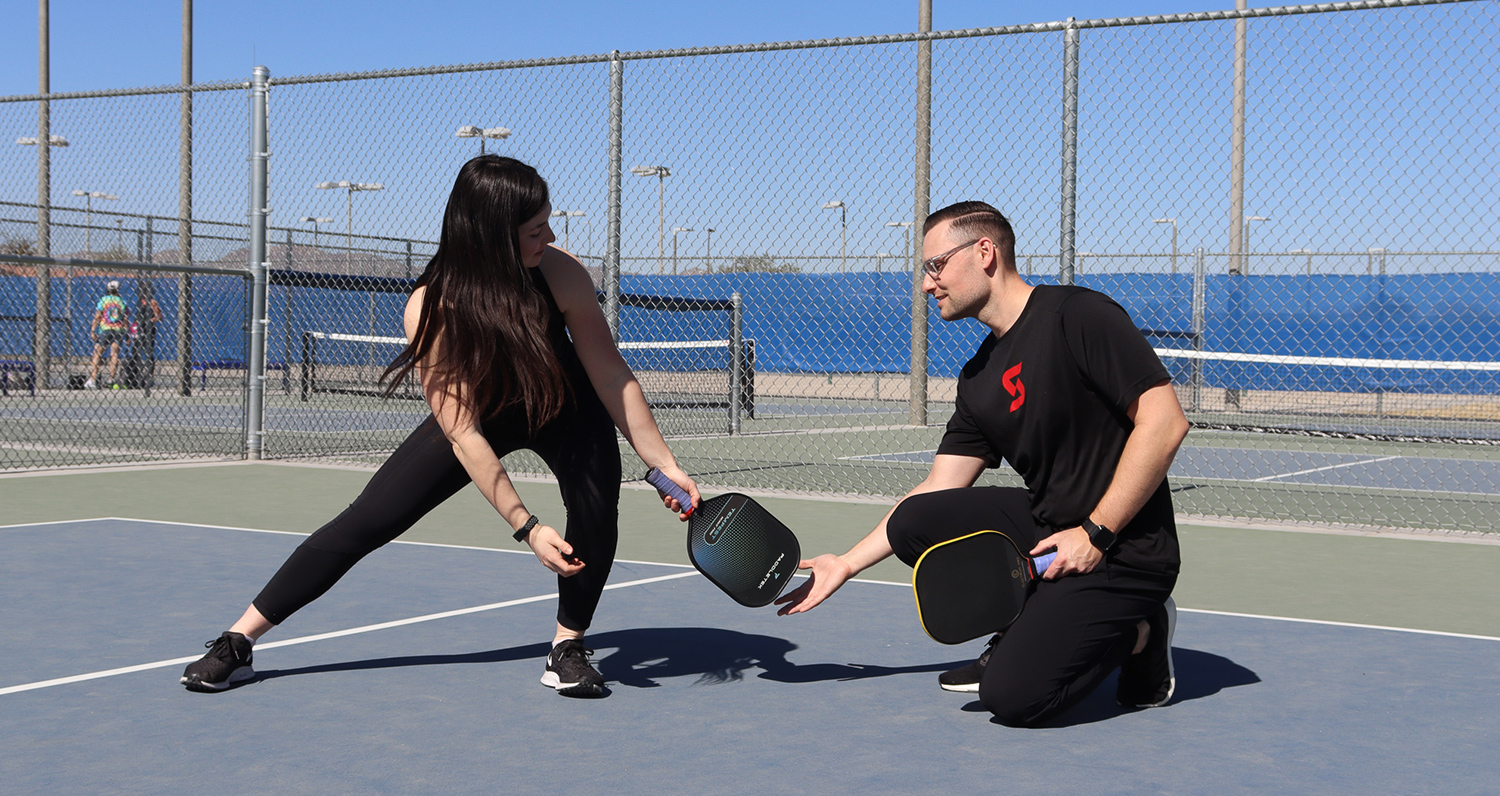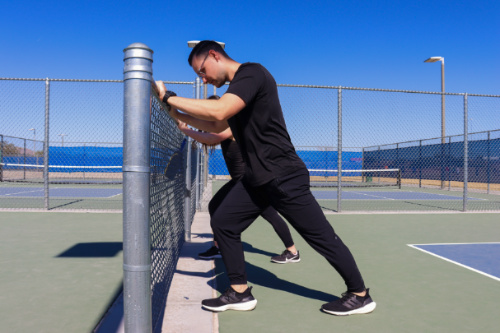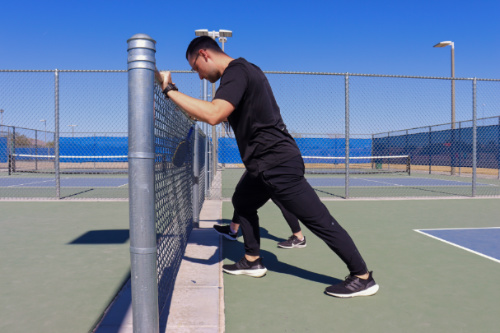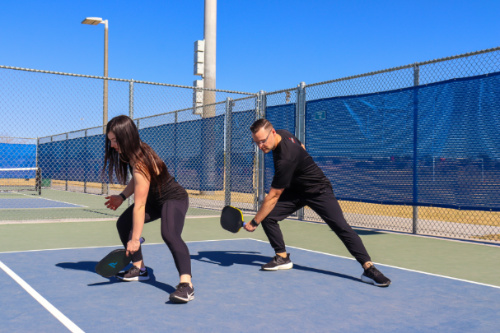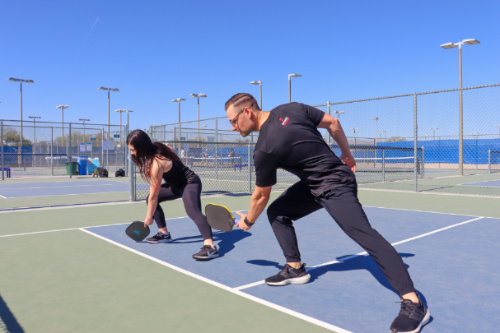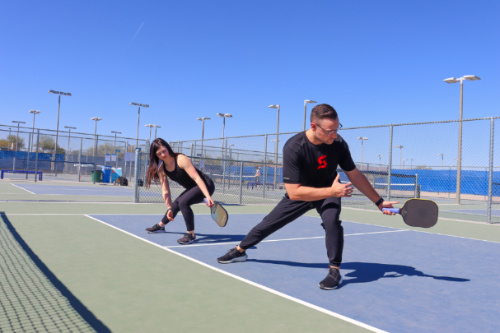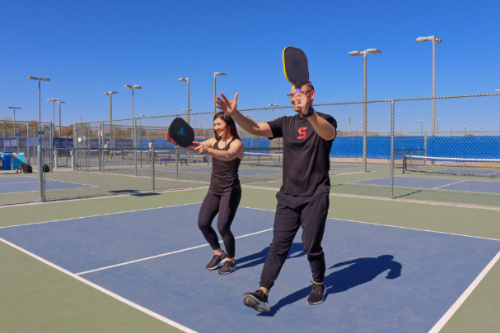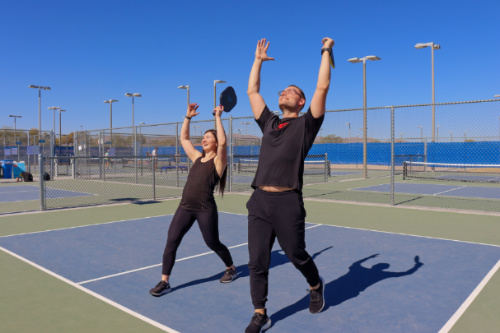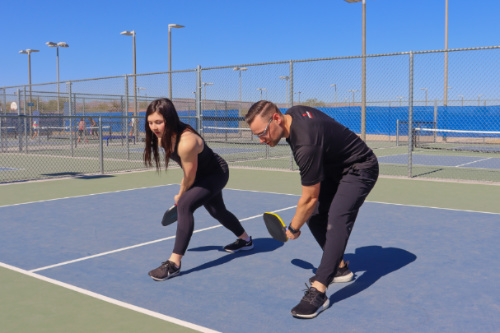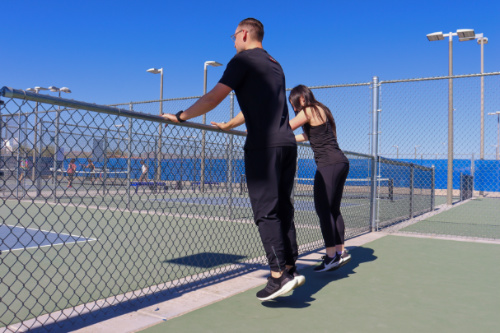Author: Eric Brown, PT, DPT, COMT, OCS
All pickleball players have a story of what first got them out on the court. Some may have a story of a friend, who was already addicted to the game, begging them to come be their partner. Others may have wanted a social or active outlet and found it at the court. For me, it was my wife’s uncle. Early in 2020, he offered to teach me and my wife his favorite hobby: pickleball. Fast forward to today, and I am fully wrapped up in this highly addictive, highly competitive game.
Pickleball began with a few dads getting together and tying together aspects of ping pong, tennis, badminton, and racquetball to entertain their kids. If you Google pickleball, many, if not all, of the articles about it cite this statistic: Pickleball is the fastest growing sport in the United States. It grew 21.3% from 2019 to 2020. The numbers aren’t out for 2021’s growth yet, but it is booming here and abroad. Many celebrities and former athletes have turned to pickleball as a competitive and physical outlet. Just recently, we saw Larry Fitzgerald and Michael Phelps participate in an exhibition match against professionals at a Professional Pickleball Association tour event. While we may see big names join this growing sport, it is fun to pick up and learn at any age and athletic level.
Socially, pickleball has been set up to create a community. The court is ¼ the size of a tennis court, which allows you to converse with your partner and your opponents while playing. The community around this sport is incredibly welcoming and warm, and seasoned players often take new players under their wing. While this is a predominately recreational sport, it is gaining traction in the competitive field. Many tournaments are popping up, and professional tours are being created with high level players being sponsored and traveling around the country.
Warmup Routine:
Maybe you don’t want to reach 5.0 status, but a proper warm-up routine will ensure that you can keep heading out to the courts, play your best, and avoid injury. All of these exercises are meant to be dynamic, so put a paddle in your hand and prepare to play through movement!
Three-way calf stretch (10-15 reps)
Keep the back heel down while stepping the front foot in three different directions in order to stretch all aspects of the calf.
Frontal plane lunge with reach (10-15 reps)
If possible, try to keep the feet and toes facing straight ahead. The leg that is stable can be kept straight to get a better stretch through the inside part of the thigh. Allow the trunk to rotate while you reach over the stepping leg.
Transverse and crossover lunges with reach (10-15 reps)
This exercise will help to get the hips warmed up. Like the exercise above, reach over the stepping leg and allow the trunk to rotate in order to get the entire body involved.
Sagittal plane forward step with global extension and reach (10-15 reps)
Take a big step forward and allow both arms to reach overhead. Your head and eyes can follow your hands. This will put us in a position that can replicate the overhead shot, and you can even get a small amount of trunk rotation to better recreate this position.
Sagittal plane backward step with global flexion and reach (10-15 reps)
Take a big step backward and allow both arms to reach down towards the ankles. It is alright to allow forward bending throughout the back and hips. Keep the front leg straight to get a better stretch out of the hamstring.
Light plyometrics – could be jump roping or ankle hops in three planes (3x 20-30 seconds)
If you choose to do ankle jumps, make sure to move in all planes of motion. This means you can jump up and down, forward and backward, side to side, and with a twist through the hips. It is alright to perform the ankle hops while holding on to a fence or a chair for support.
For more information on the three planes of motion; frontal, transverse, and sagittal planes, check out Spooner blog, “Game Ready: Get a Leg Up on the Competition”
How can a PT help?
These exercises are a great start to both prepare your body to move effectively on the pickleball court as well as to prevent pain and injury! However, if pain and injury do occur, reach out to a Spooner therapist, so we can get to the bottom of the problem and get you back on the court. Additionally, if you feel that there is a specific area of your game that is holding you back – this could be changing direction on the court, generating power from the baseline, reaching for the low shot, or having an effective overhead – a PT can help to determine why this might be happening and provide additional exercise and treatment to address any impairments that can be found.
Want to get in touch with a physical therapist to help your pickleball game? Schedule an appointment or complimentary movement screen with a Spooner physical therapist at one of our locations throughout the valley.

